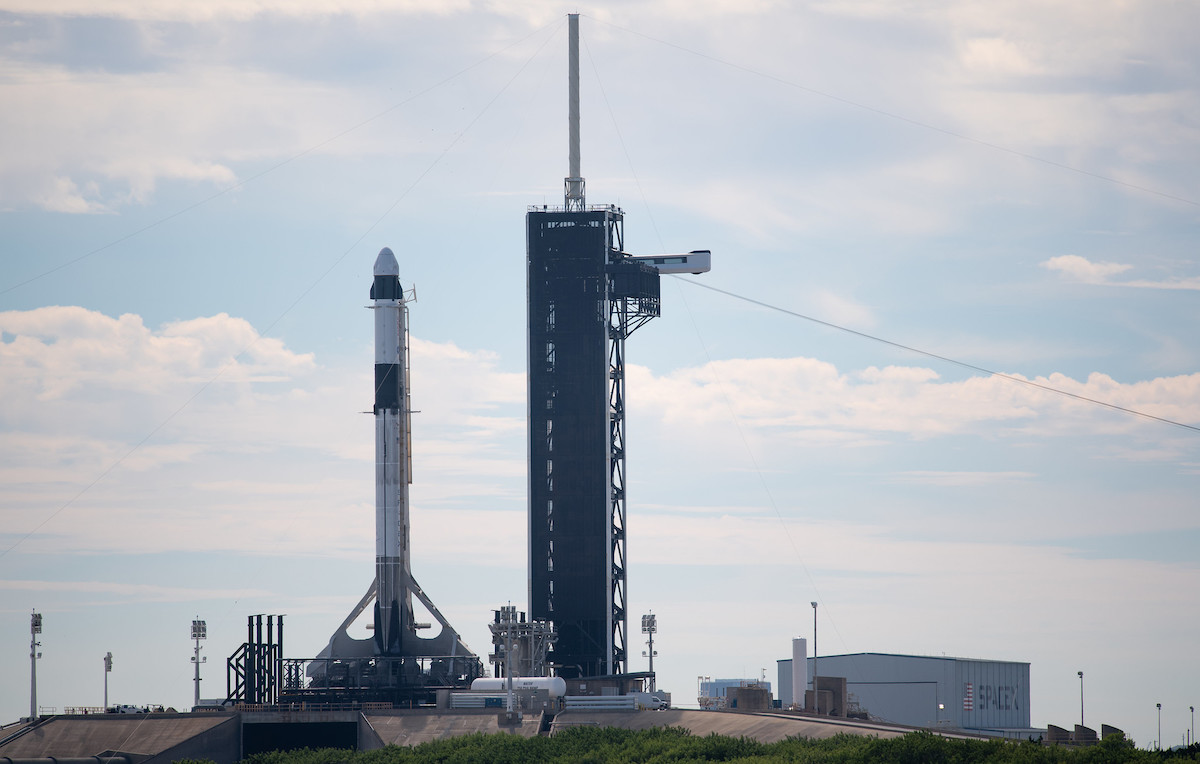SpaceX test-fired a Falcon 9 rocket at NASA’s Kennedy Space Center early Thursday, checking off another box on the pre-flight checklist before liftoff Sunday with a four-person crew heading for the International Space Station.
But a weather forecast shows a high risk that winds or waves int the Atlantic Ocean could force a launch delay.
The test-firing early Thursday paved the way for a dress rehearsal Thursday night with the four astronauts preparing to ride the Falcon 9 and Crew Dragon capsule to the space station.
NASA commander Raja Chari, pilot Tom Marshburn, and mission specialists Kayla Barron and Matthias Maurer — from the European Space Agency — will put on their SpaceX flight suits and board the Crew Dragon spacecraft on launch pad 39A.
SpaceX’s ground support team will help the astronauts through the hatch of the Crew Dragon spacecraft. The operation serves as a practice run, and is the only time the crew will go inside the spacecraft on the launch pad before launch day.
A line of strong to severe thunderstorms is forecast to push through Florida’s Space Coast Thursday evening, but it wasn’t clear whether that might impact the schedule for the dress rehearsal.
Running a few hours behind schedule, SpaceX ground teams rolled the Falcon 9 rocket and Crew Dragon Endurance capsule from SpaceX’s hangar to pad 39A early Wednesday. A hydraulic lift raised the 215-foot-tall (65-meter) rocket vertical over the flame trench, setting the stage for the test-firing early Thursday.
SpaceX engineers stationed inside a firing room at Kennedy’s launch control center gave commands for an automated computer-run sequencer to begin loading kerosene and liquid oxygen into the Falcon 9 rocket after midnight Thursday.
The mock countdown culminated in ignition of the Falcon 9’s nine Merlin 1D main engines at 1 a.m. EDT (0500 GMT) Thursday. The engines ramped up to full power, producing 1.7 million pounds of thrust for nearly 10 seconds as hold-down clamps kept the Falcon 9 on the ground.
After engine cutoff, SpaceX drained the rocket of its liquid propellant supply, and took steps to safe the Falcon 9 in preparation for the dress rehearsal later in the day.
The preparations this week are leading up to a launch opportunity Sunday at 2:21 a.m. EDT (0621 GMT). The mission, known as Crew-3, will be the third operational SpaceX crew rotation flight to the space station, and the fifth SpaceX mission to carry astronauts into orbit.

But weather conditions, particularly sea states and winds downrange in the Atlantic Ocean, will likely be a factor in determining whether the mission remains on schedule for launch Sunday.
In a pre-launch forecast issued Thursday, the weather team from the U.S. Space Force’s 45th Weather Squadron predicted an 80% chance of good conditions at Kennedy Space Center for liftoff Sunday morning.
Forecasters expect a chance of isolated rain showers, and otherwise partly cloudy skies at launch time, with winds from the west at 10 to 15 mph, and a temperature around 66 degrees Fahrenheit. The main weather concerns at the launch site are with low chances of violating the flight through precipitation and cumulus cloud rules.
But the conditions downrange are a different story.
A strong low pressure system producing gale-force winds is currently located southeast of Nova Scotia, near the Falcon 9 rocket’s flight corridor heading northeast from Kennedy Space Center. The National Hurricane Center gives the system 30% chance of becoming a tropical cyclone in the next five days.
Even if the low pressure center does not become a tropical cyclone, the system is expected to move south and southeast over The Atlantic Ocean. There’s a high risk the weather system could produce winds and waves that exceed the Crew Dragon spacecraft’s criteria for splashdown, which could occur in the North Atlantic if there’s an emergency or rocket failure during launch.
SpaceX and NASA monitor weather conditions are more than 50 locations along the Falcon 9 rocket’s ascent track from Florida’s coast, up the East Coast, and across the Atlantic toward Ireland.
Teams calculate the probability of violation for each location — looking at winds, waves, lightning, and precipitation — before determining if conditions are “go” for launch.
SpaceX and NASA have a backup launch opportunity for the Crew-3 mission at 1:10 a.m. EDT (0510 GMT) on Wednesday, Nov. 3.
Email the author.
Follow Stephen Clark on Twitter: @StephenClark1.
